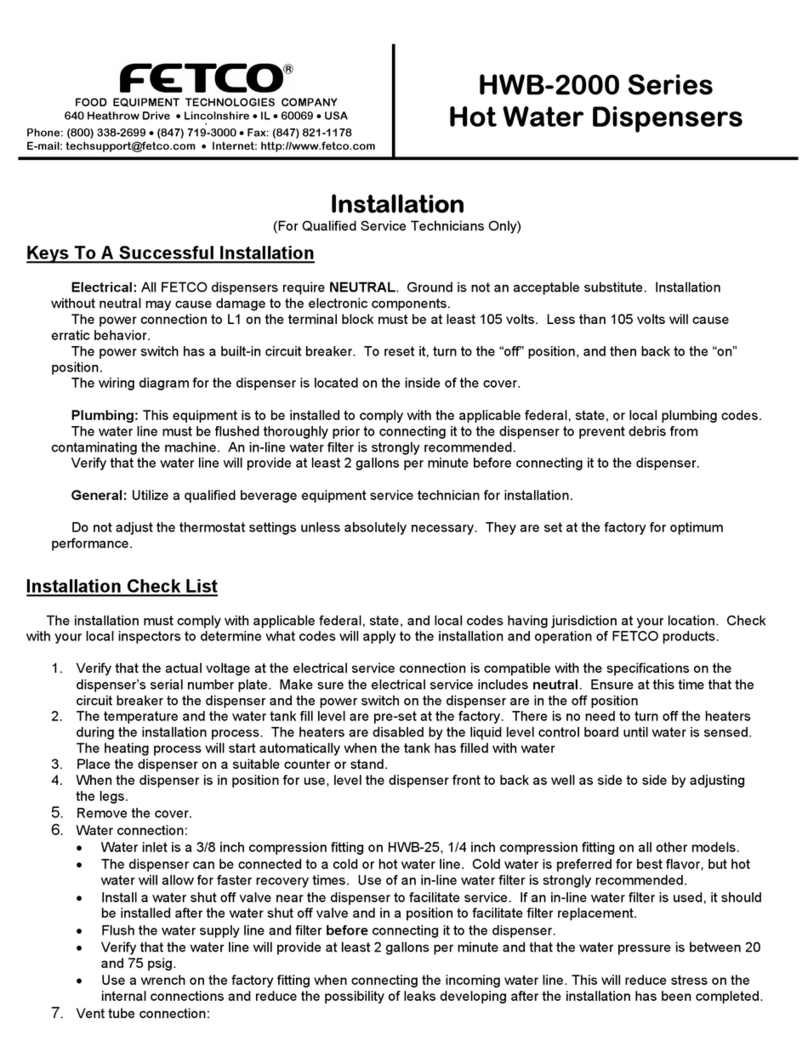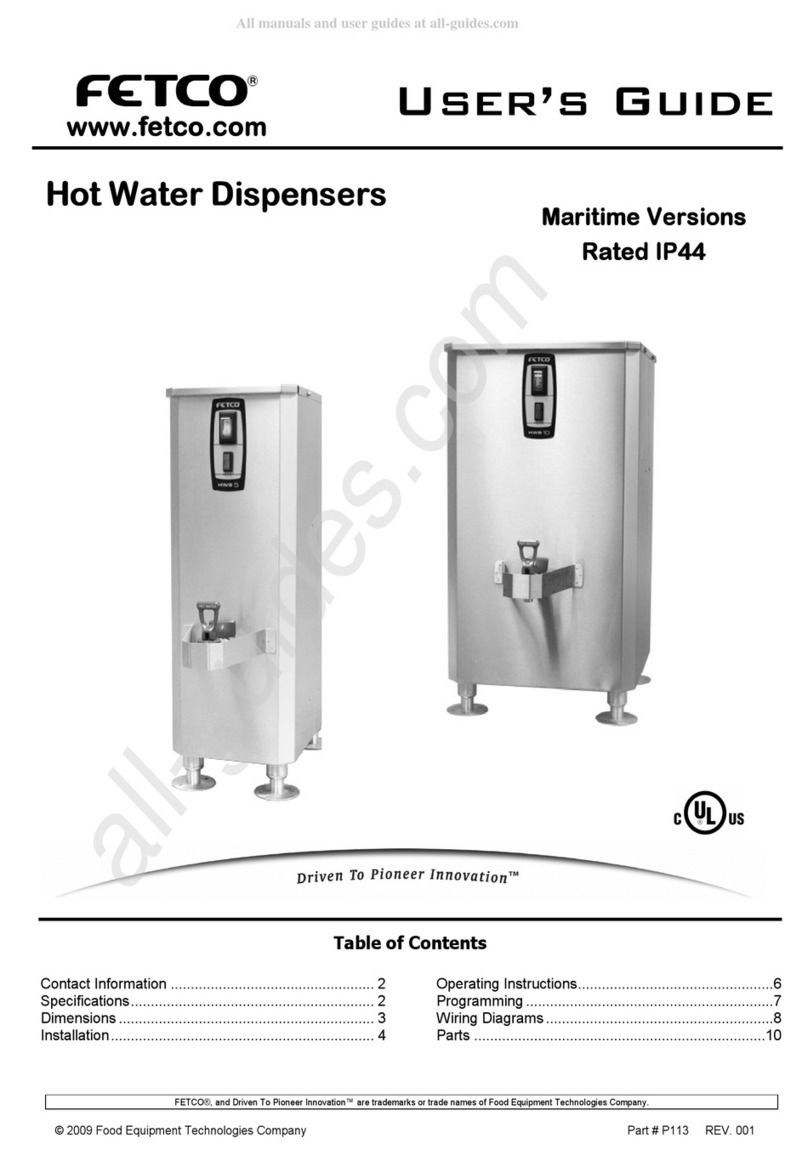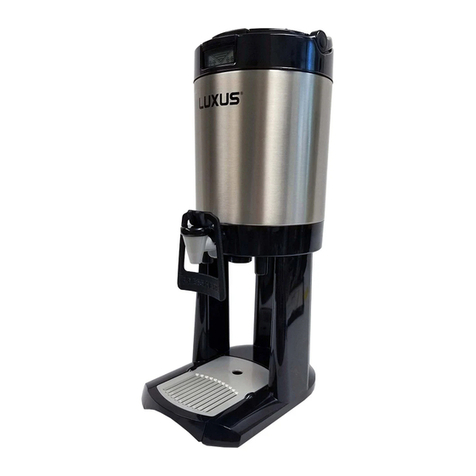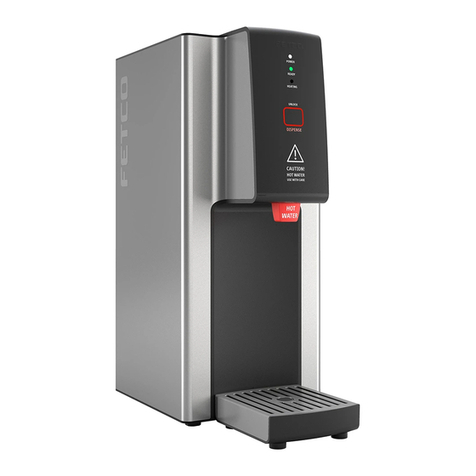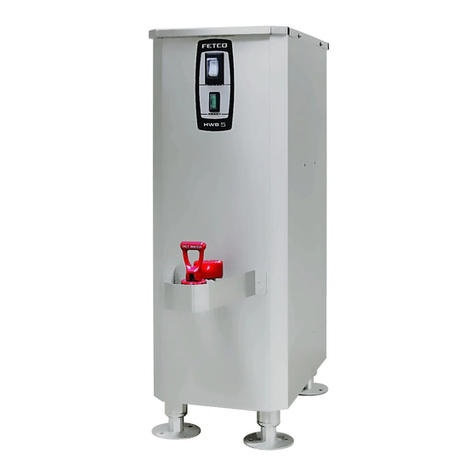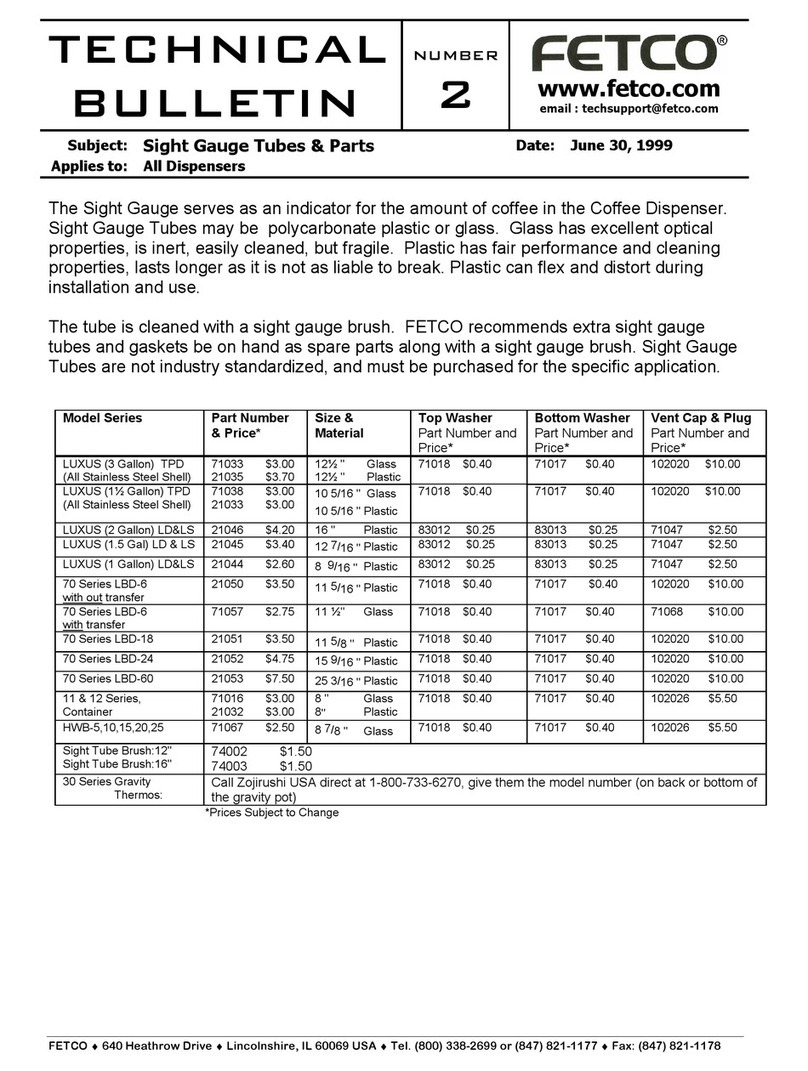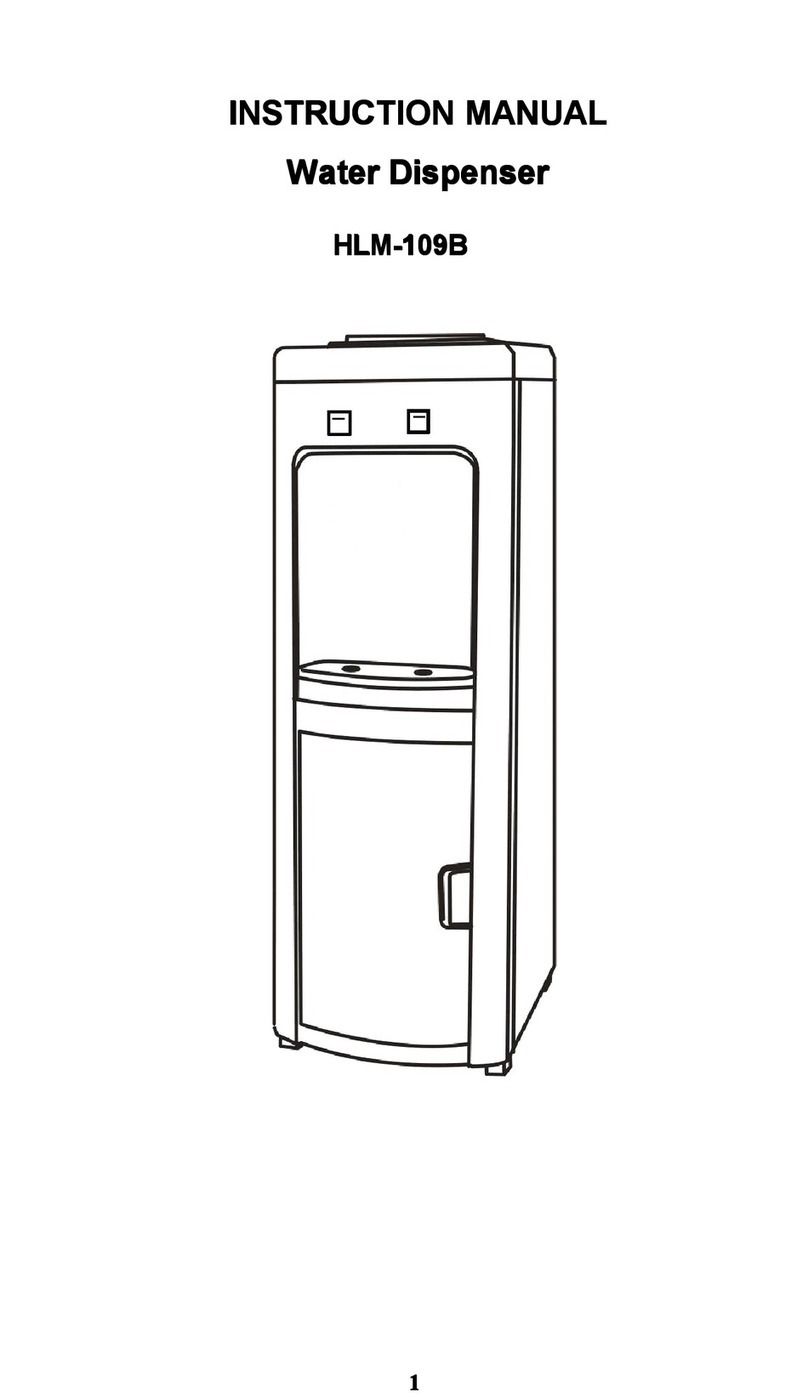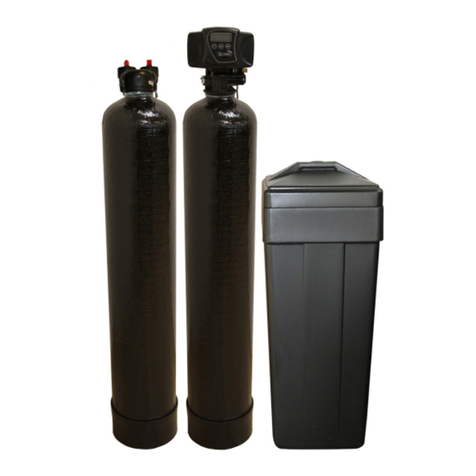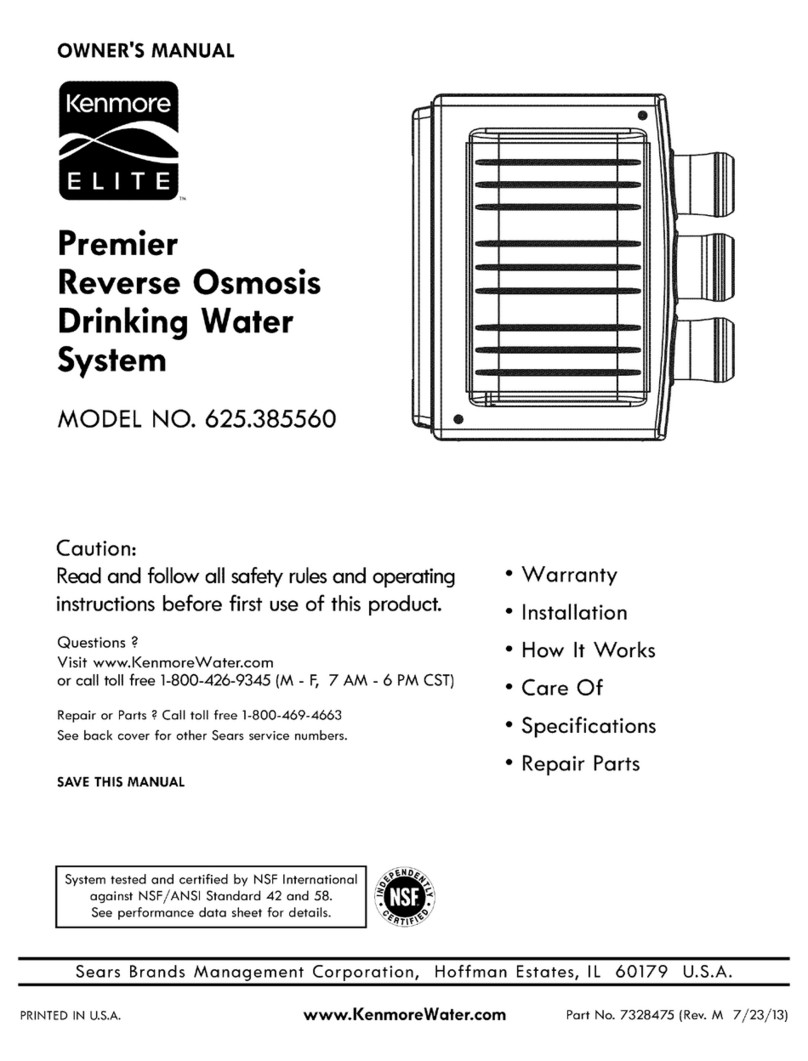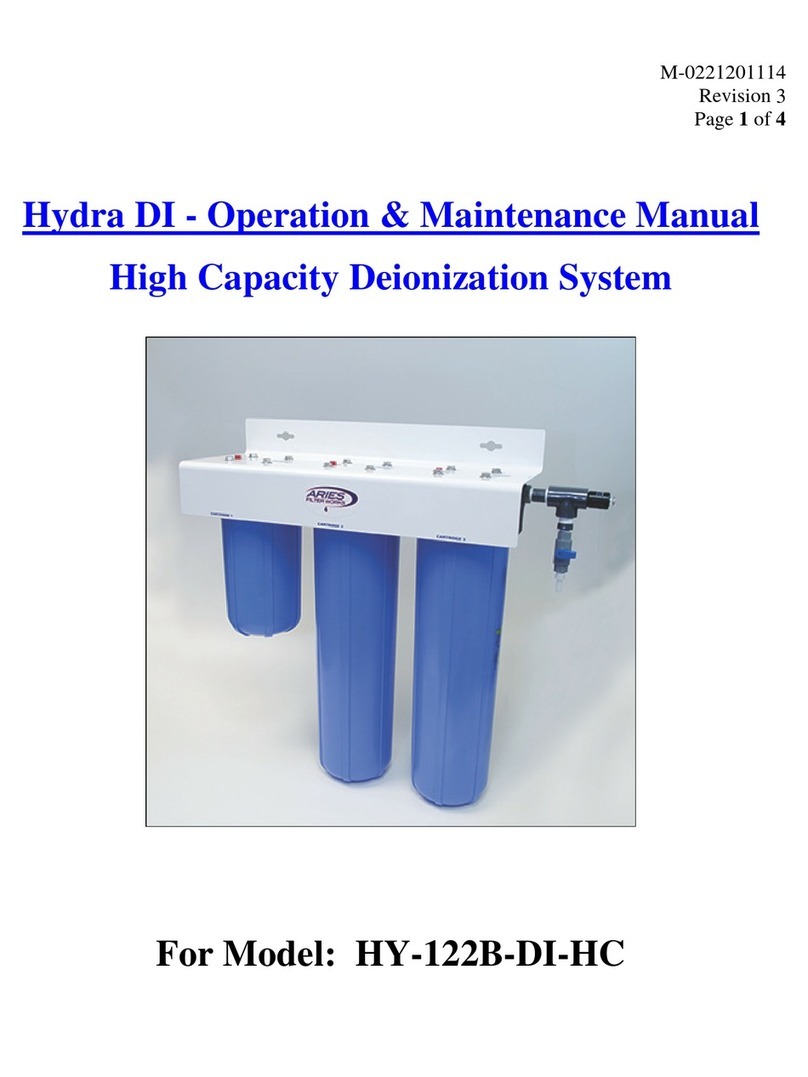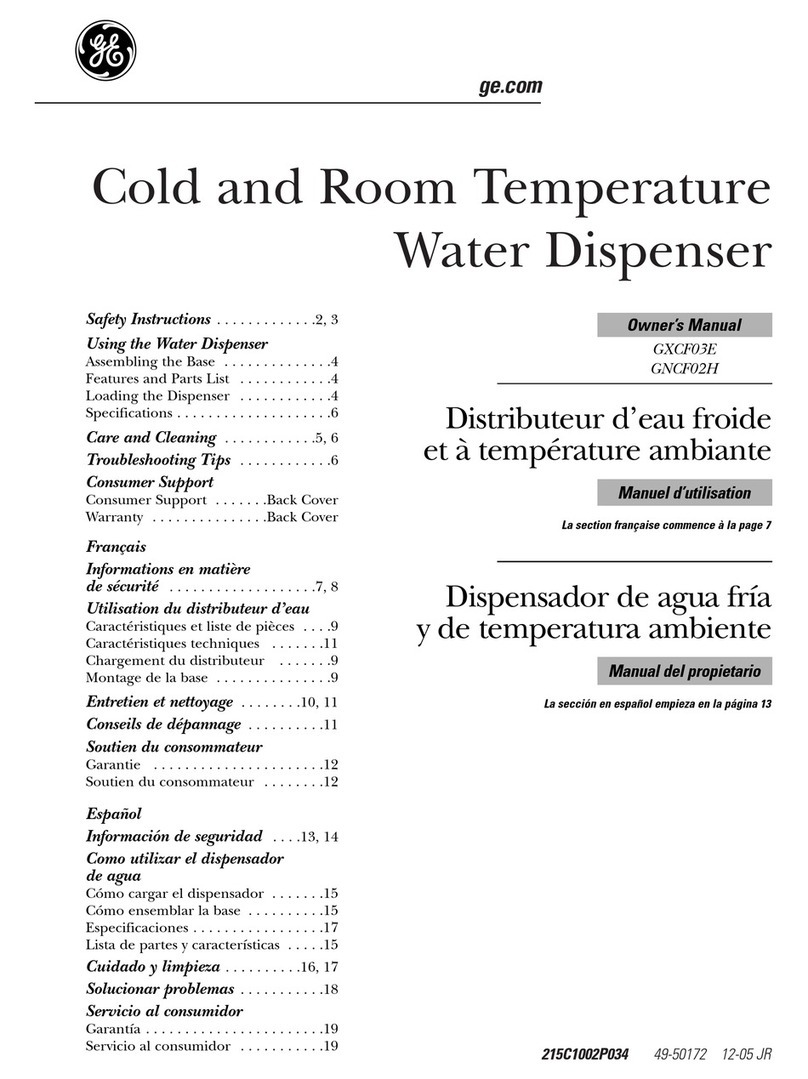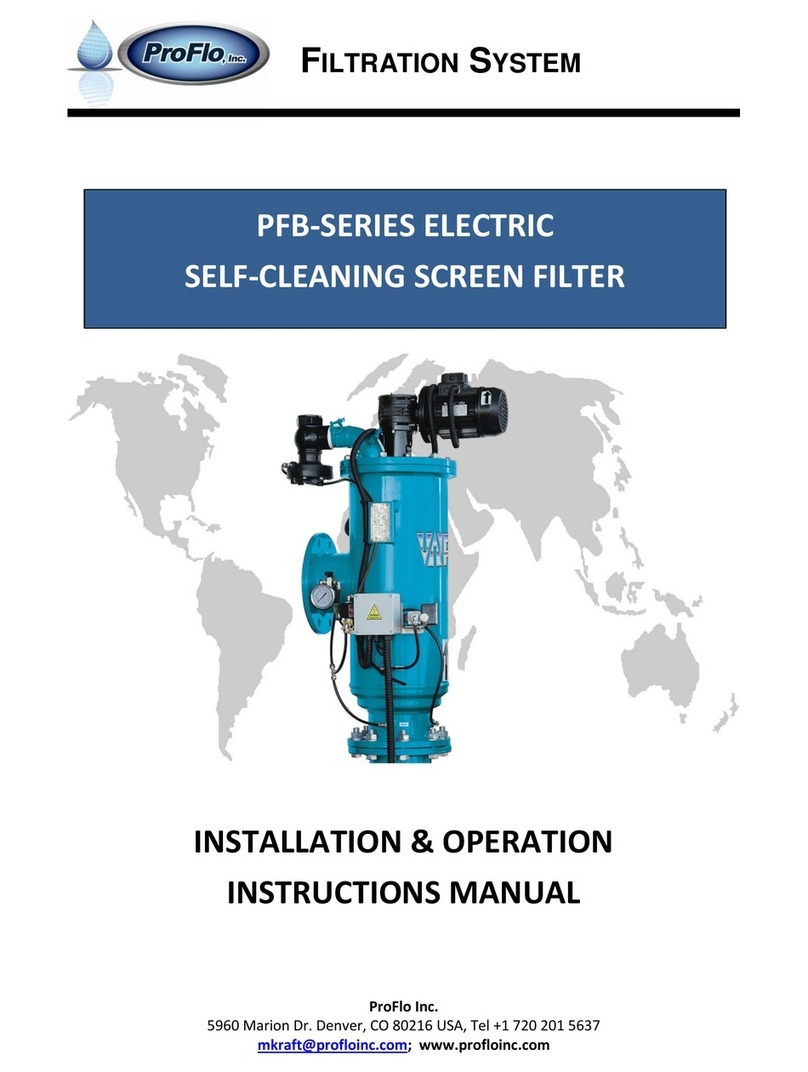
7
Temperature System:
The temperature system consists of an electronic thermostat and probe to control the temperature of the dispensed
water, a mechanical thermostat and probe to control the ready light, and heating elements. The system is enabled by
the liquid level control board. (See the previous section - Fill Circuit.)
When the water level probe is in contact with water, power is delivered to the electronic thermostat through the liquid
level control board. If the temperature probe senses that the water is below the set point, the thermostat energizes the
heating elements through the mercury relay and the water is heated.
This thermostat is factory set at 205°F. (Slightly lower for high altitude installations.)
The function of the mechanical thermostat is to control the ready light. If the water temperature drops below 195°F,
the ready light will turn off, indicating that the water is too cold.
The combination of the two thermostats ensures that the water temperature will be between 195°F and 205°F
whenever the ready light is on.
Adjustments
Thermostat Adjustment:
The thermostats are factory set at the optimum temperatures. Adjustments should not be necessary unless new
thermostats are installed, or the factory settings have been changed.
There are two thermostats in the control circuit of the unit.
• High limit thermostat - Located on the left side of the unit, this is an electronic thermostat that controls the
dispensed water temperature. It is factory set at 205°F.
• Low limit thermostat - Located on the right side of the unit, this is a mechanical thermostat that turns off the
“ready” light if the water temperature drops below its set point. It is factory set at 195°F.
To measure the water temperature, with the “ready” light “on”, dispense water from the faucet for at least 15 seconds,
then hold a thermometer in the stream of water flowing out of the faucet. The temperature should be between 195°F and
205°F.
Adjusting the high limit thermostat:
• Remove the cover of the unit.
• The high limit thermostat is on the left side. Locate the adjustment stem, which is taped to the thermostat.
• Remove the black plastic cover on the outside of the dispenser and carefully insert the stem into the
adjustment hole through the front of the unit.
• Turn the stem clockwise to increase the temperature until it stops. This thermostat is normally set at the
maximum setting except at very high altitudes.
• Replace the adjustment stem, the cover and the plastic cap.
Adjusting the low limit thermostat is more complicated. First you must change the settings of both thermostats to
195°F, then re-adjust the high level thermostat to 205°F.
Note: The low limit thermostat used on units manufactured after September 2000 is not adjustable.
It is permanently set at 195
°
F.
• Turn the main power switch off.
• Remove the cover of the unit, the round tank cover, and the black plastic caps of both thermostats.
• Use a small screwdriver to turn the low limit thermostat, located on the right side, to its lowest setting, fully
counter-clockwise.
• Turn the stem on the high limit thermostat counter-clockwise to decrease the temperature approximately 1/8
turn.
• Drain several gallons of water from the dispenser.
• Turn the main power switch back on, and allow the tank to fill. The ready light will remain off during the next
few steps.
• Wait for the water in the tank to heat until the sound of the tank rumbling stops.
• Measure the water temperature by inserting a thermometer directly into the top of the tank. If the
temperature is below 195°F, turn the stem slightly clockwise, wait for the tank to stop heating, and measure
the temperature again.
• Repeat the previous step until the temperature in the tank is 195°F.
• Next, use a small screwdriver to turn the low limit thermostat clockwise slowly just until the ready light comes
on, but no further.
• Finally, turn the stem on the high limit thermostat fully clockwise to return it to 205°F.
• Turn the power switch off and replace the adjustment stem, tank cover, dispenser cover, and the plastic
caps.




